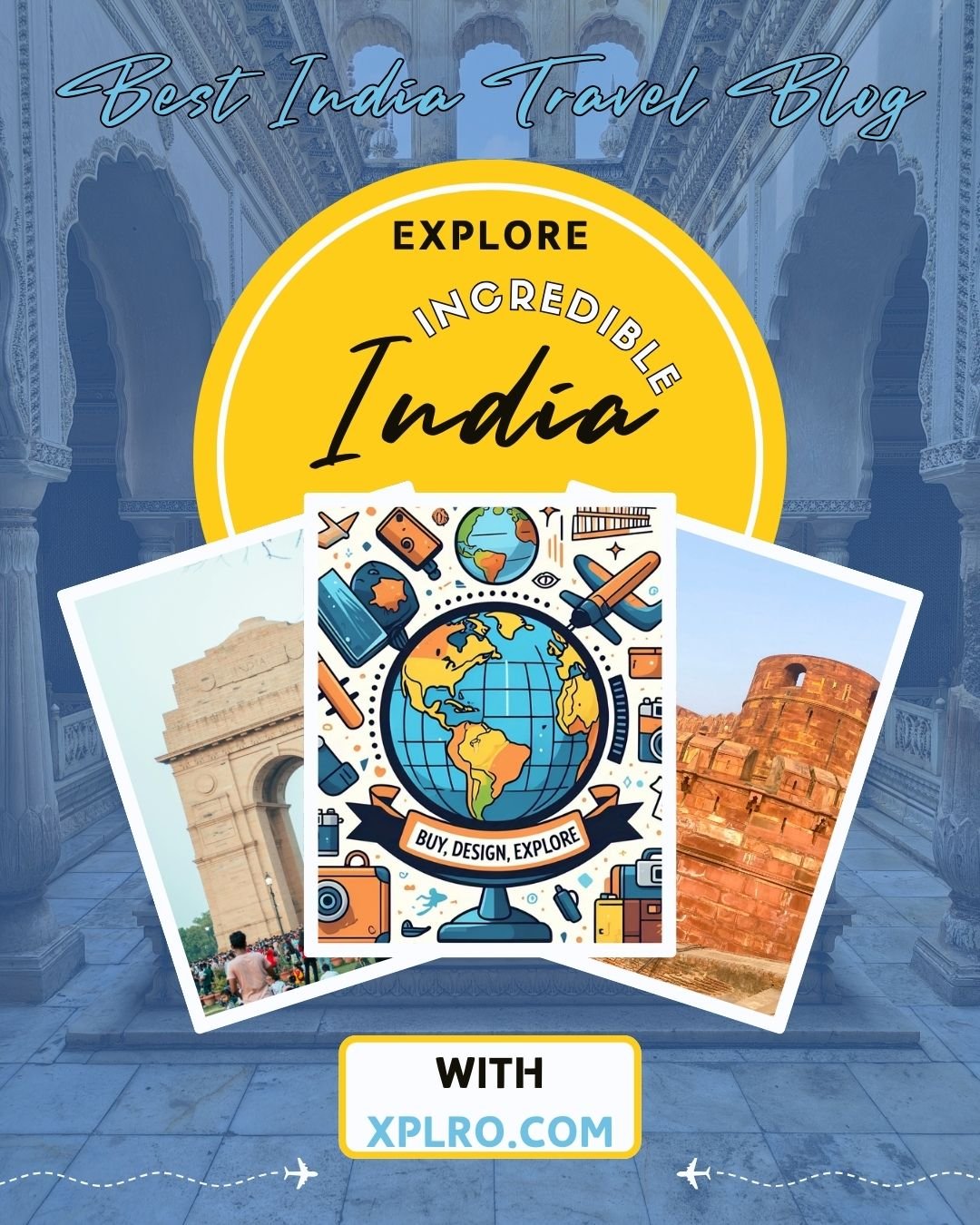- 100% Buyer Protection Guarantee
Sitewide 35% OFF! 🎉🔥 Limited Time Offer – Don’t miss out!

Sitewide 35% OFF! 🎉🔥 Limited Time Offer – Don’t miss out!



Plan Unforgettable Trips
Explore hidden gems with Xplro’s expert travel blogs, custom T-shirts, honest reviews, and planning tools.
Plan Unforgettable Trips
Explore hidden gems with Xplro’s expert travel blogs, custom T-shirts, honest reviews, and planning tools.
Featured reviews of hotels, agencies, cafes, and adventure services across India.
Free travel planning tools, itineraries, budget tips, and destination checklists.

Honest reviews of hotels, resorts, homestays, and more.

Featured travel agencies and tour operators that make trips happen.

Real reviews of adventure activities and unforgettable travel experiences.

Cafés, shops, and hidden gems every traveler should know.

Travel T-shirts, accessories, and travel product picks curated for explorers.
Personally curated by Xplro’s team of Indian travel experts to help you discover the best India & world has to offer.
Planning a trip to India in 2025? Discover Xplro Select – a handpicked collection of the best travel destinations, hotels, and unforgettable experiences across India, curated exclusively by our travel experts. From winter escapes in the Himalayas to the most welcoming boutique hotels for foreign travelers, every listing in Xplro Select is verified for authenticity, cultural value, and comfort. Whether you’re seeking offbeat destinations, spiritual retreats, or world-class stays, explore India the right way – with Xplro.com, your trusted travel companion.

GET BEST TRAVEL T-SHIRT at XPLRO
At XPLRO, we believe travel isn’t just about the journey—it’s a lifestyle!
Our premium travel-inspired T-shirts let you express your adventurous spirit while staying effortlessly stylish.
🚀 Wear the Adventure. Inspire the World. Let Your Outfit Tell Your Travel Story! 🌎
BUY
The Best Travel-Inspired Gear!
Explore 250+ unique travel-inspired designs, crafted for true explorers!








Design. Wear. Explore!
DESIGN
Unleash your creativity and design unique travel-inspired products that match your style. From custom prints to personalized adventure gear, create something truly yours. Start designing today and travel with a look that speaks your wanderlust!


EXPLORE
The Ultimate Travel Guide & Encyclopedia!

Unlock India & world with Xplro’s expert travel reviews, guides and comprehensive travel encyclopedia. From hidden gems to iconic destinations, we provide everything you need for a seamless travel experience.

Browse Travel Topics for Every Explorer
BUY! DESIGN! EXPLORE!
Xplro.com is your ultimate travel companion, combining a detailed travel reviews, blog, an in-depth travel encyclopedia, and an exclusive online store for travel-inspired products. Whether you’re looking for travel guides, unique printed T-shirts, or must-have travel essentials, Xplro has it all in one place.
We ensure fast, efficient, and hassle-free fulfillment, delivering high-quality products with a smooth shopping experience. Every order is handled with care, ensuring premium packaging and on-time delivery.
Make a lasting impression, we prioritize premium materials, quality inks, durable printing, and top-notch craftsmanship in every product. Whether it’s a travel guide, T-shirt, or accessory, quality is our promise.
Discover well-researched travel guides, reviews, expert itineraries, and insider tips to explore top destinations like a pro. From hidden gems to essential travel hacks, we help you plan unforgettable journeys.
Shop high-quality printed T-shirts, travel accessories, and personalized POD products designed for explorers and wanderers. Our collection is perfect for travel lovers looking to express their passion.
Want something unique? Create unique pieces with our built-in Design Maker, even with no design experience! Our easy-to-use design tools allow you to create and customize products effortlessly, making each piece truly one-of-a-kind.
Shop with confidence! We use trusted payment gateways and advanced security encryption to safeguard your transactions, ensuring a smooth and worry-free checkout experience.
Our clients say
Our travel-themed T-shirts are designed for travellers adventure lovers like you! Comfortable, stylish, and perfect for every journey—our customers love them. Check out their reviews!



Quality You Can Trust, Shopping You Can Rely On!!
Welcome to Xplro.com, Made by Travelers. Made for Travelers. – India’s Most Trusted Travel Blog. Xplro is the ultimate platform for discovering authentic India travel reviews, expert-written travel blogs, curated destination guides, and hidden travel gems across the country. Whether you’re planning your next adventure, looking for reliable reviews, or shopping for travel-ready T-shirts, Xplro is built to help you explore smarter and travel better.
As India’s fastest-growing community-powered travel blog, we bring together real stories from real travelers — spotlighting offbeat places, must-visit hotels and cafés, unique travel agencies, and unforgettable experiences from every corner of India. Our Explore India Blog section offers in-depth travel guides, itineraries, and budget tips tailored for both first-time visitors and seasoned explorers.
Need adventure-ready outfits? Discover our exclusive line of travel T-shirts India, curated with explorers in mind. From printed tees to travel accessories, Xplro’s travel gear collection helps you wear your wanderlust proudly.
Want to grow your travel business? Get your homestay, hotel, café, or tour agency featured on Xplro and reach thousands of passionate Indian and global travelers through honest, SEO-optimized reviews and listings.
Whether you’re a solo backpacker, a family traveler, or a business in the tourism space — Xplro is your all-in-one destination for India travel blogs, planning tools, and gear that goes the distance.
👉 Explore. Plan. Share. Shop.
Join India’s most dynamic travel community – only at Xplro.
Get curated travel tips, hidden gems, and exclusive gear deals delivered to your inbox.
Note: No spam. Just wanderlust.